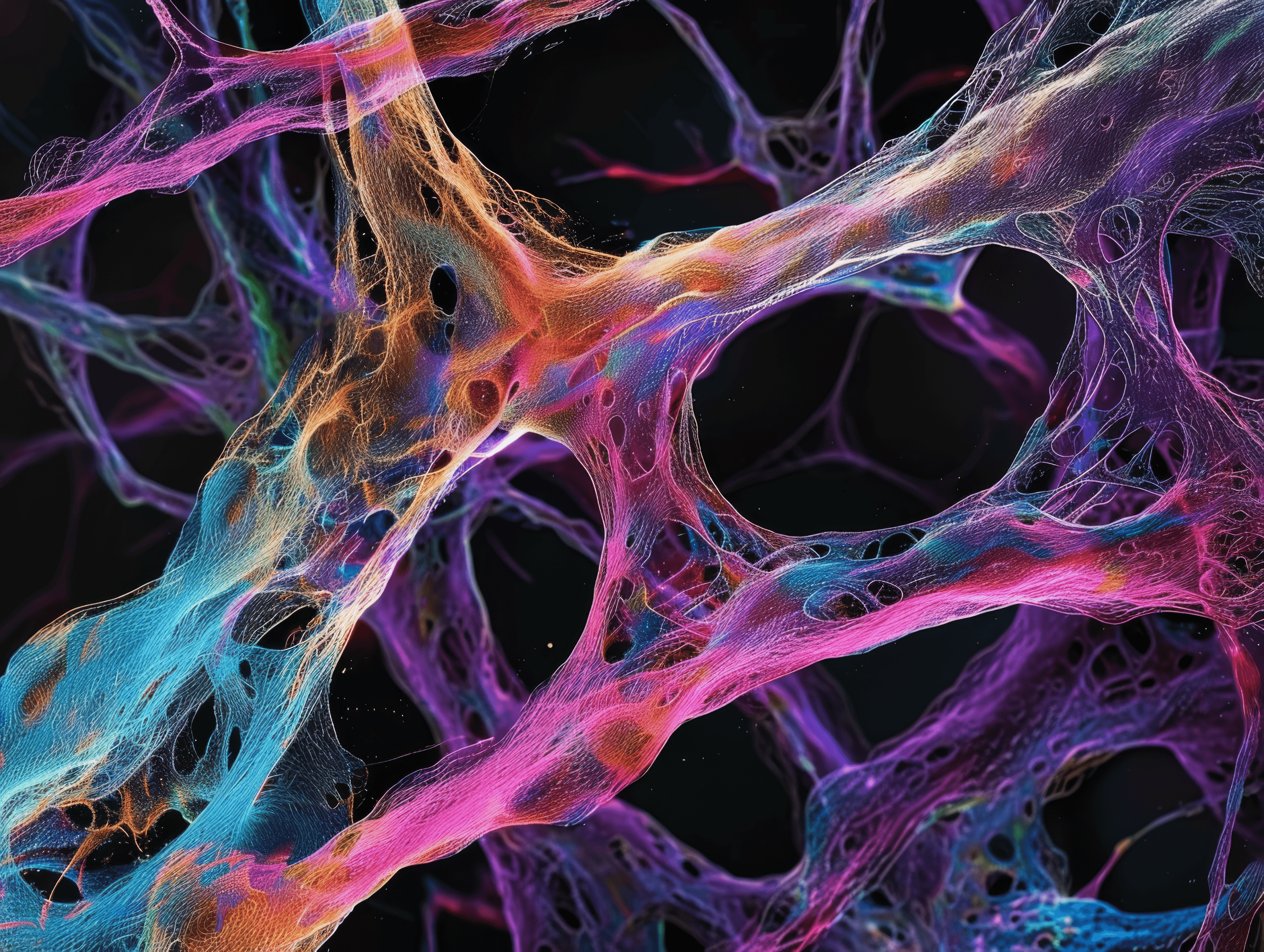What is elastin?
Elastin is the main component of the elastic fibers, which provide stretch, recoil, and elasticity to the skin. While Collagen receives the majority of the attention, collagen and elastin together form the Collagen Elastin Matrix that is responsible for the support and structure in the skin. Without elastin, skin would not have any stretch or suppleness.
How is elastin formed?
The synthesis of elastin (elastogenesis) is a complex process that involves the crosslinking of tropoelastin monomers and microfibrillar proteins to produce elastic fibers. The main cell type responsible for elastogenesis in the skin is the fibroblasts.
Unfortunately, the ability to synthesize new elastin declines with age. Given a very slow production rate, elastin cannot turnover, or replenish itself easily. The turnover rate (half-life) is published to be around 70 years in healthy tissue, thus, protection is essential.
Elastin is degraded by chronic sun exposure, inflammation, free radical damage, and injuries to skin.
As damages accumulate the fibers shorten and fragment, leading to decrease in skin elasticity, and limited wound healing and skin rejuvenation. Moreover, the breakdown of elastin releases bioactive peptide fragments which acts as triggers for metalloproteinases which further accelerates the breakdown of both elastin and collagen. The release of these peptides starts around age 40.
Typical treatments effective for resurfacing and collagen stimulation - laser, retinoids, micro-needling, and chemical peels - have not yet shown to be clinically effective at elastin regeneration.
How to protect your elastin?
Most of our elastin is produced from birth through adolescence and then slows significantly. Due to the complex mechanisms involved in elastogenesis, and its slow process most current treatments are aimed at preserving the native elastin in the skin. Mainly via the use of sunscreen and antioxidants. In terms of antioxidants, gamma-oryzanol extracted from red and black rice show protective effects.
3 Ways to Protect Your Elastin:
Use a high quality sunscreen: Look for UVA and UVB protection.
Reduce inflammation: Ingredients like: Bisabolol, Asparagopsis Armata Extract, Hydrolyzed Algin, Niacinamide, Palmitoyl Tetrapeptide-7 can reduce inflammation in skin and protect against inflammatory triggers.
Use high quality Antioxidants: Protect against free radical damage and help heal oxidative damage. Use an inside out strategy, combining healthy antioxidant rich foods and topical ingredients like: Ascorbic Acid (Vitamin C), Gamma Oryzanol, Ferulic Acid, Hordeum Vulgare Extract (extracted from barley), Hesperidin Methyl Chalcone (extracted from citrus fruit flavonoids), Niacinamide.
Is there anything that can help regenerate elastin?
There is early research on the ability of polyphenols to increase the precursor of elastin, meaning polyphenols could help stimulate elastin growth and regeneration. Polyphenols are naturally occurring compounds found largely in plants. They are secondary metabolites of plants that help protect against ultraviolet radiation and aggression by pathogens.
There is limited clinical evidence showing that retinoids and vitamin C can stimulate elastin production. Similarly, topical application of elastin and elastin precursors has also been tested with limited clinical evidence.
Any ingredient that can successfully increase elastin synthesis will have a significant impact on skin aging. We are excited, and continue to follow the research closely, but we think it is still too early to tell.
Here are three journal articles if you are interested in a deep dive in Elastin and polyphenols: Baumann et al 2021, Chowdhury et al 2021, Sinha et al 2014
References:
Weihermann, A. C., et al. "Elastin structure and its involvement in skin photoageing." International journal of cosmetic science 39.3 (2017): 241-247.
Huertas, Angela C. Mora, et al. "Molecular-level insights into aging processes of skin elastin." Biochimie 128 (2016): 163-173.
Aziz, Jazli, et al. "Molecular mechanisms of stress-responsive changes in collagen and elastin networks in skin." Skin pharmacology and physiology 29.4 (2016): 190-203.
Baumann, Leslie, et al. "Clinical relevance of elastin in the structure and function of skin." Aesthetic Surgery Journal Open Forum. Vol. 3. No. 3. US: Oxford University Press, 2021



